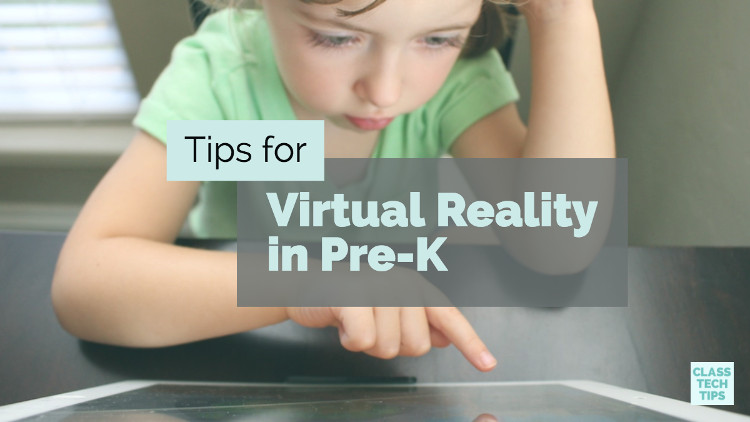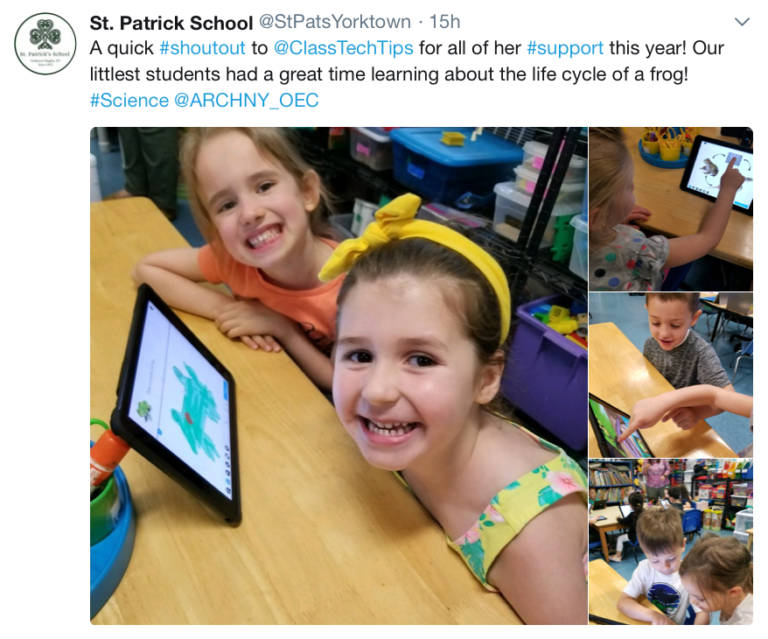Class Tech Tips: Tips for Virtual Reality in Pre-K

Virtual reality in Pre-K isn’t about using headsets with early learners. Instead, we are focused on sharing exciting, informative content connected to instructional goals. This content could include 360 images and 360 videos. Displaying this media can take place on individual student screens (like tablets) or whole class screens (like interactive display boards).
You might have seen my post from earlier this summer on using Nearpod with early learners. Nearpod is a dynamic, interactive presentation tool for students of all ages. One of my favorite features of Nearpod is the ability to embed 360 images to present students with experiences with virtual reality in Pre-K or at any grade level.
Of course, Nearpod isn’t the only tool for accessing virtual reality experiences for early learners. But I’ve had the opportunity to lead lessons using this tool with Pre-K students. Whether sitting in a circle together on the rug or circulating around the classroom, it’s amazing to see how this tool can connect students to engaging and relevant content.
Virtual Reality in Education
Virtual reality in education can be a game changer for students. It can help them explore faraway spaces and spark conversations. For our youngest learners, it can help them envision what life is like in other parts of the world.
In Taming the Wild Text: Literacy Strategies for Today’s Reader , a book I co-authored with Pam Allyn, we describe some of the reasons virtual reality is used in today’s classrooms:
“Virtual reality is technology that simulates the real world. The most popular form of virtual reality uses a headset. With virtual reality, students can be “transported” to new places, like a coral reef or a rainforest… Tailor a virtual reality pre-reading activity to the book you are reading and the technology you have available. In a low-tech classroom, this could mean exploring a 360-degree video with students on an interactive whiteboard. In a high-tech classroom, students can take turns using VR headsets with a smartphone.”
As you design learning activities for Pre-K students, you’ll want to keep a few things in mind. Is the content you are choosing developmentally appropriate? Is the 360 image or 360 video you have decided to share with students connected to learning goals? These are just a few things to consider as you get started.
Tools and ideas to transform education. Sign up below.
[Classroom Tips for Biography Projects with Spark Page]
Virtual Reality Tips for Pre-K

Although virtual reality absolutely has a “wow” factor, you’ll want to make sure you are introducing it thoughtfully to students. When working with a group of early learners this year, the content area goals included an exploration of animal habitats. I shared 360 images with students to illustrate different places where animals lived. Even though it would have been plenty of fun to “swim” around a coral reef. Our goal was to make observations and discuss the animals we saw in this habitat.
In addition to clear learning goals, you may want to refer to tthis list of virtual reality discussion prompts. You can tailor the prompts on this list to many different learning environments. They can be used during a virtual reality experience or at the conclusion of a VR exploration.
Do you have a virtual reality experience with early learners to share? What type of content would you like your students to view as a 360 image or 360 video? Share in the comments below!
cross posted at classtechtips.com
Monica Burns is a former classroom teacher, author, speaker, and curriculum & edtech consultant. Visit her site ClassTechTips.com for more ideas on how to become a tech-savvy teacher.
